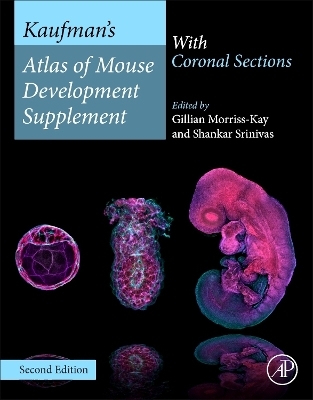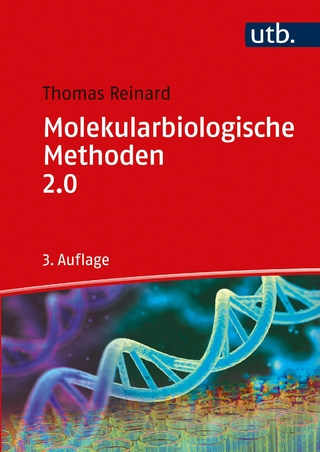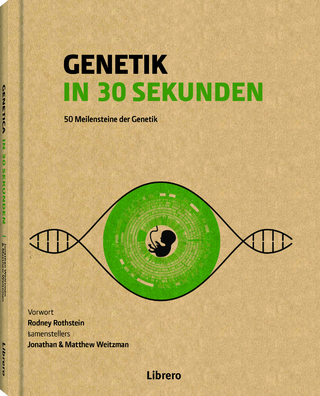
Kaufman’s Atlas of Mouse Development Supplement
Academic Press Inc (Verlag)
978-0-443-23739-3 (ISBN)
- Noch nicht erschienen (ca. Januar 2025)
- Versandkostenfrei innerhalb Deutschlands
- Auch auf Rechnung
- Verfügbarkeit in der Filiale vor Ort prüfen
- Artikel merken
Department of Human Anatomy and Genetics, University of Oxford, Oxford, UK Gillian Morriss-Kay is Emeritus Professor of Developmental Anatomy at the University of Oxford, where she taught embryology, histology and anatomy to medical students. Her research goal, using first rat, then mouse embryos, was to enhance understanding of normal and abnormal human development, especially of the craniofacial region and neural tube. This led to collaborative mouse-human work on the developmental genetics and morphogenesis of craniosynostosis. She was editor of the Journal of Anatomy for ten years. Shankar Srinivas has a research career spanning 30 years, focusing on mouse developmental genetics (kidney, peri-implantation embryology, gastrulation and early cardiogenesis). More recently his work involves also using human embryos to understand early cell type diversification and cardiogenesis. He teaches anatomy and embryology to medical students. In 2004 Dr. Srinivas started his independent group at the University of Oxford as a Wellcome Trust Career Development Fellow and as Zeitlyn Fellow and Tutor in Medicine at Jesus College. In 2016 he became Professor of Developmental Biology. His research group studies how the coordinated cell movements that shape the early mammalian embryo prior to and during gastrulation are controlled and understanding how the heart forms and starts to beat. His group takes a multidisciplinary and collaborative approach to address these questions, using techniques spanning molecular genetics, lightsheet and confocal time-lapse imaging, single cell approaches, proteomics and embryo explant culture.
1. Introduction
2. Coronal sections
3. A Revised staging of mouse development before organogenesis
4. Establishment of early embryonic lineages and the basic body plan
5. Early organogenesis: placing and elaborating the organ primordia
6. Placenta formation – Developmental milestones toward the establishment of a functional feto-maternal interface
7. Spatio-temporal dynamics of mouse heart tube development
8. Establishment of a double blood circulation in the developing mouse heart
9. Development of the hematopoietic system
10. Thymus development
11. Gastrointestinal tract
12. Development of the pancreas
13. The reproductive system
14. Development of the respiratory system
15. The urinary system
16. Integument and associated integumentary appendages
17. The axial musculoskeletal system
18. Spinal cord and peripheral nervous system
19. Limb development
20. The craniofacial region
21. Regulatory mechanisms of palate and tongue development
22. The developmental anatomy of teeth
23. Brain development
24. The visual system
25. Development of the mouse inner ear
26. Olfactory system embryonic development
27. The Mouse Developmental Anatomy Ontology (EMAPA) and the Gene Expression Database for Mouse Development (GXD)
28. Digital graphical resources and developmental anatomy in the mouse
29. The informatics of developmental phenotypes
| Erscheint lt. Verlag | 1.1.2025 |
|---|---|
| Verlagsort | San Diego |
| Sprache | englisch |
| Maße | 216 x 276 mm |
| Gewicht | 450 g |
| Themenwelt | Naturwissenschaften ► Biologie ► Genetik / Molekularbiologie |
| ISBN-10 | 0-443-23739-5 / 0443237395 |
| ISBN-13 | 978-0-443-23739-3 / 9780443237393 |
| Zustand | Neuware |
| Haben Sie eine Frage zum Produkt? |
aus dem Bereich


